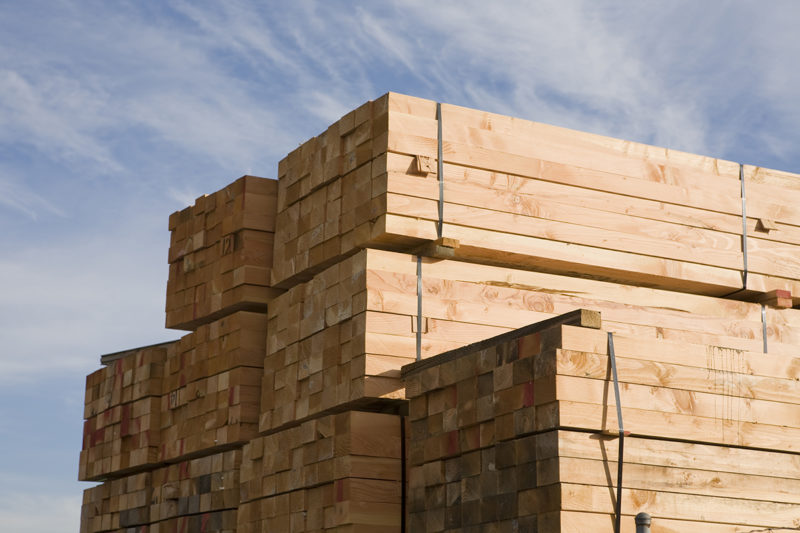If you’ve ever purchased any type of dimensional wood, a term given to boards cut to standard sizes, then you’ve probably noticed that the actual sizes of dimensional wood don’t match the common size claimed. For example, a standard 2×4 does not actually measure 2 inches by 4 inches.
Why don’t the measurements match?
There’s actually a really good reason why the actual measurements of dimensional wood don’t match the common dimensions. The explanation takes a bit of a history lesson.
Dimensional Wood History
The need for a common size understanding between mills and the markets began over 100 years ago when lumber started traveling further to get to its destination via rail or boat. Prior to that, until the middle of the 19th Century, lumber was produced locally in the place where it would be used. At that time, sizes weren’t a problem because the needs of local carpenters were understood, and hand-fitting lumber, as they were building, was pretty normal.
The increasing demand for dimensional wood after World War I led to the first national size standards in 1924. Those standards were revised several times until the demand for lumber during World War II led to the use of large quantities of wood in specific sizes. Those standard sizes required by the war effort resulted in the adoption of the same size standards that are still in use today.
Incidentally, grading lumber by specific standards began at about this same time as well.
So we know that standard sizes became important during WWI and WWII, but that still doesn’t seem to explain the discrepancy between nominal and actual sizes of dimensional wood. To get that answer, we have to discuss a little more about the wood itself.
Why the Nominal vs. Actual Size Discrepancy?
When a sawmill cuts a log up into dimensional wood, they are cutting green, unseasoned wood. That means that the lumber has a higher moisture content. During WWII, the war effort demanded large shipments of dimensional wood that was green and cut into specific sizes. That means that a 2×4 piece of lumber was cut at the sawmill from a green log, and measured 2” by 4” at the time of cutting.
However, as the wood dries out and cures, it shrinks. That means that the 2×4 cut green doesn’t meet the same dimensions after it’s cured due to shrinkage.
And that is still how we do things today.
Dimensional wood is cut green to the common dimensions we use today. When it is cured, it reaches the actual size. Lumber standards actually recognize both green and cured lumber, and have size requirements for both.
Who Regulates Lumber Standards?
Regulating lumber standards can be a pretty difficult job. As far back as 1969, the US Department of Commerce was responsible for standardizing both green and finished softwood (SYP) lumber, but today that responsibility rests on the National Institute of Standards and Technology (NIST). You can find out more specifics about the current standards in the Voluntary Product Standard PS 2020. In general, most hardwoods follow the same guidelines as SYP when it comes to width, but may measure slightly differently in thickness.
While it’s relatively simple to create the standards, it’s a lot more difficult to actually regulate dimensional wood. State and local inspectors visit mills and retail locations to spot-check dimensions, but determining if SYP boards are within tolerances can be complicated due to the following:
Is It Possible to Calculate the Actual Dimensions?
So now that we know how the standards for dimensional wood were developed, and that there is a difference between the nominal dimensions and the actual dimensions, you may be even more confused about it than before. How can you calculate the actual dimensions of the wood you need to buy if you don’t know how much to attribute to shrinkage and surfacing?
Fortunately, there are two ways you can know the actual size of the wood you need.
- Get a copy of our Dimensional Wood Cheat Sheet.
- Calculate dimensional wood sizes based on the general rules below.
Here are the general rules that you can use to calculate softwood (SYP) dimensions. Keep in mind that the size changes based on the width or thickness.
Wrapping It Up
Realizing that dimensional wood isn’t really the size that it’s labeled as can really throw a wrench into your order and your project. In 2017, Home Depot even got sued over the discrepancy (The lawsuit was dismissed a year later).
It helps to understand what the standard is for dimensional wood, but knowing the historical background and how lumber is milled helps put it all into context. While it’s unlikely that nominal and actual dimensional lumber sizes will ever be the same, it is possible to calculate the actual size. You can also download our Dimensional Wood Cheat Sheet to make it easier for yourself.
*Updated 6/28/2022*


![[PRESS RELEASE] Conner Industries Announces Major Guardian Packaging Expansion](https://conner.b-cdn.net/wp-content/uploads/2024/10/Guardian-Packaging-Expansion-500x383.jpg)
![[PRESS RELEASE] Conner Industries Announces Website Dedicated to Integrated Packaging Division](https://conner.b-cdn.net/wp-content/uploads/2024/05/Conner-Packaging-Blog-500x383.jpg)


